Adil Najam
Monsoons in South Asia are often associated with the romantic idiom of joy and innocence and prosperity. Often rightly so. It brings relief to a scorched earth baked through the summer. These first three pictures, above, capture that romanticism – even though they are not necessarily joyful – just because of their artistic compositions: a child in Lahore taking a mud bath, and two children in Karachi surrounded by water.
But for the poor monsoon can bring even more misery pouring down. These scenes from Karachi, Bakhtiarabad (Balochistan) and Lahore, testify to that misery as no mere words could.
This last set of four photographs from Lahore show how it is the simplest chores of life that can become the greatest challenges in ways that so many of us cannot even begin to comprehend.
(Pictures from Reuters and AFP)
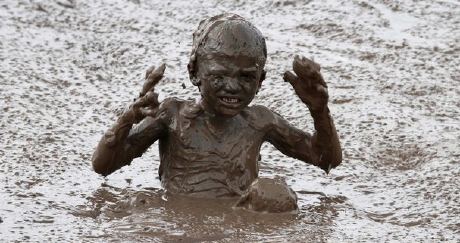
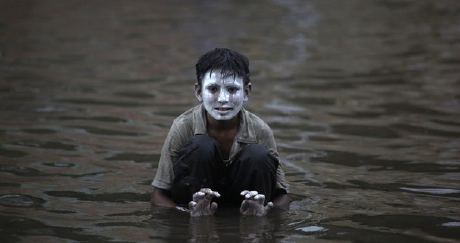
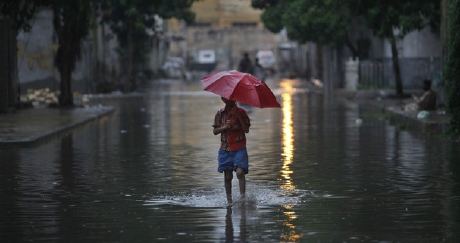
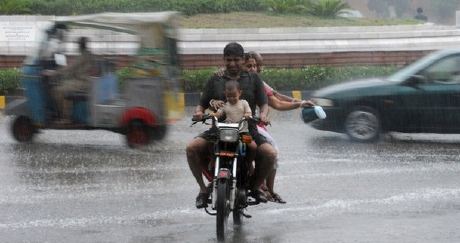
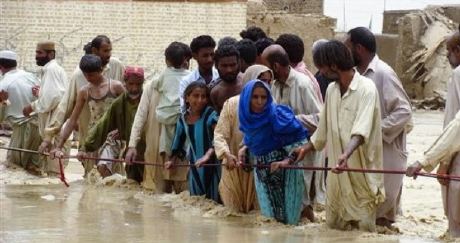
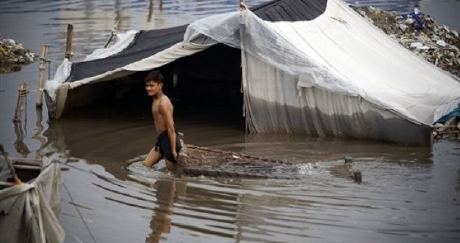
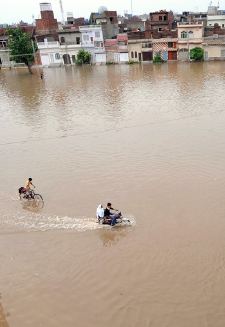

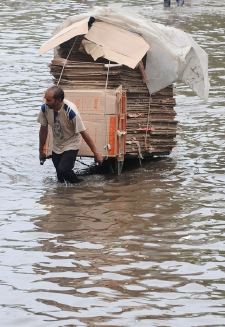
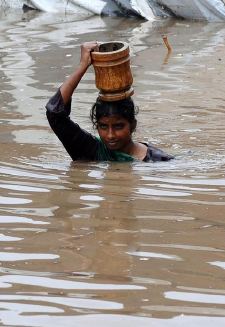



















































Morally a parent cannot give a photographer permission to take a photograph that degrades their child. Source: adevelopingstory dot org
The caption for these first two photographs are of Reuters’ employees.
A boy plays in the mud during rain in the outskirt of Lahore July 27, 2010. Monsoon rains continued in different parts of the country on Tuesday, according to the Pakistan meteorological Department’s website. REUTERS/Mohsin Raza (PAKISTAN – Tags: ENVIRONMENT SOCIETY IMAGES OF THE DAY)
A boy uses cream on his face as he sits in rain water on the street of Karachi July 27, 2010. Monsoon rains continued in different parts of the country on Tuesday, according to the Pakistan Meteorological Department’s website. REUTERS/Akhtar Soomro (PAKISTAN – Tags: ENVIRONMENT SOCIETY)
ATP, I ask again, was the permission obtained? What circumstances brought the Reuters photographers face to face with these two subjects?
We should always proceed with caution when interviewing children, …. When we decide to talk to a child directly, we should be satisfied the interview is crucial to the telling of an important story. The overriding concern must be to avoid exposing a minor to harm and we must do our utmost to minimise the stress of the experience for the subject. In normal circumstances, a reporter needs the permission of the appropriate authority such as a parent, guardian or school authority to interview a child.
Reuters Handbook of Journalism, pg 516
The BBC guidlines read as follows:
We must ensure that the physical and emotional welfare and the dignity of people under the age of eighteen, and in particular children under fifteen, are protected during the making and broadcast of programmes and online content, irrespective of any consent given by them or by a parent, guardian or other person in loco parentis.
This is not the first time that poor children seem to be exploited for the purpose of photo journalism. And I am sure this is not the last time either, but if we have dignity, we must raise our voice against this kind of pure exploitation.
And so what are the rules of ethics that govern ATP? Surely, ATP cannot hide behind the mask of “we got this from a reputable source” routine.
I ask again, either these photo journalists step forward and explain the circumstances of these photographs, or that these two photographs be take down for the sake of dignity of the minors.
I know, we have life and death issues in Pakistan and millions of people at risk and this is not the most important issue that should distract, but then we are into “taranas” just the same.
And if we do not protect the dignity of the subjects, especially the dignity of the children, then we debase ourselves.
What we could not and would not do in publications in Boston or Princeton or Berkley; we should not do for publications about Pakistan either.
The first three photos are clearly staged. Nothing journalistic or spontaneous about them.
But the first two belong to the gutter photo journalism . They are exploitive of poor children. My gut tells me that the top picture was perhaps even forced upon the child as he is clearly distressed in the picture.
These first three pictures, above, capture that romanticism – even though they are not necessarily joyful – just because of their artistic compositions: a child in Lahore taking a mud bath, and two children in Karachi surrounded by water.
Dead wrong. There is no romanticism, no artistic composition. These indeed belong to the hall of shame of journalism. Don’t we decry the abuse of children; poor children?
Perhaps ATP will do the needful. Either take them down or invite have the photographers and explain how they came about to capture the moment.
AZAB-I-ILAHI (unfortunately)
(Punishment of Allah SWT (unfortunately))
Nice pictorial which depicts the every day hardships of ordinary Pakistanis. We keep worrying about things we cannot change and not worrying enough about the things we can!
Until we do not find it in our hearts to fight the everyday miseries of people, we will never get to a place where we can have a functioning society